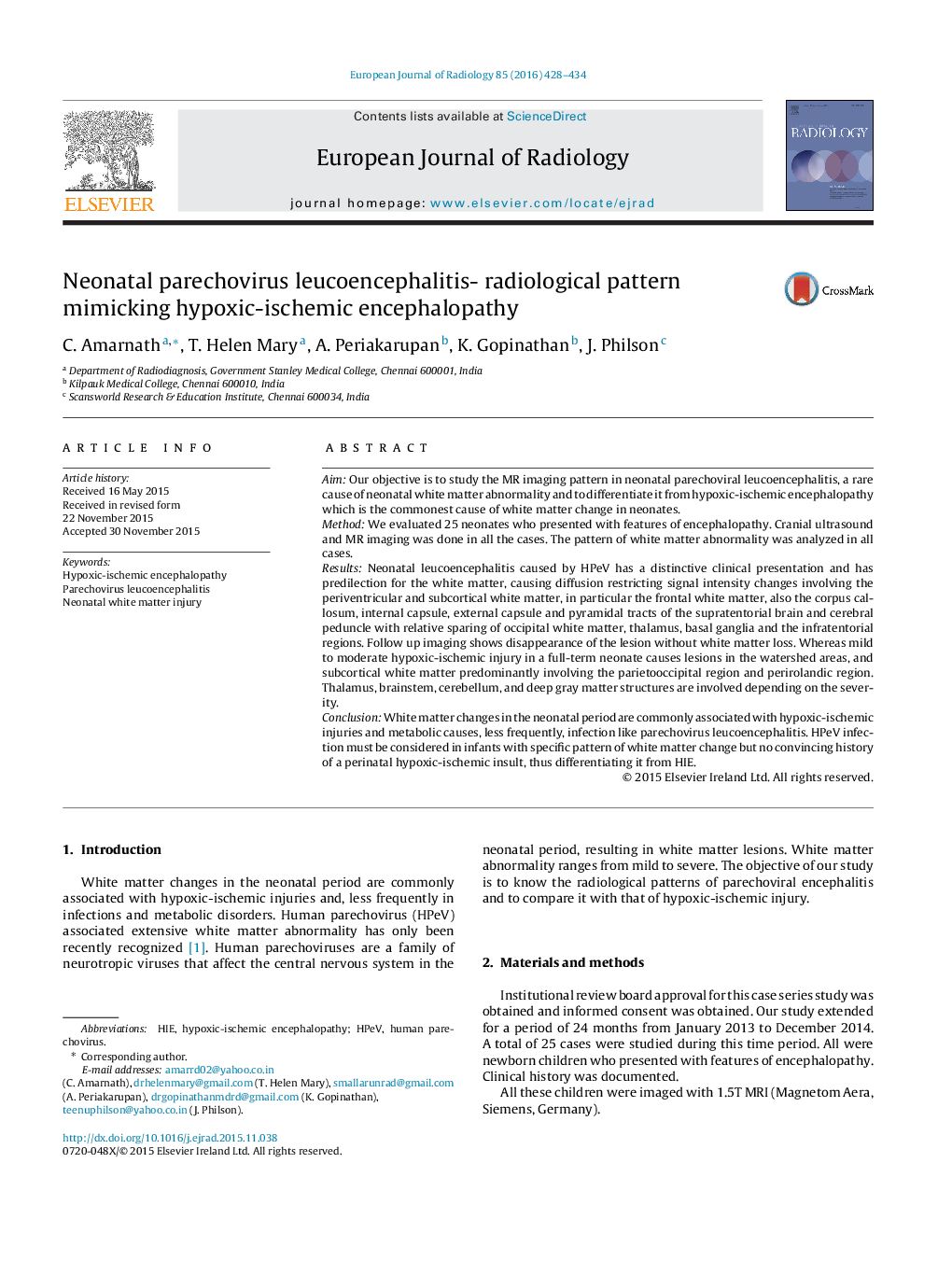| Article ID | Journal | Published Year | Pages | File Type |
|---|---|---|---|---|
| 4225082 | European Journal of Radiology | 2016 | 7 Pages |
AimOur objective is to study the MR imaging pattern in neonatal parechoviral leucoencephalitis, a rare cause of neonatal white matter abnormality and to differentiate it from hypoxic-ischemic encephalopathy which is the commonest cause of white matter change in neonates.MethodWe evaluated 25 neonates who presented with features of encephalopathy. Cranial ultrasound and MR imaging was done in all the cases. The pattern of white matter abnormality was analyzed in all cases.ResultsNeonatal leucoencephalitis caused by HPeV has a distinctive clinical presentation and has predilection for the white matter, causing diffusion restricting signal intensity changes involving the periventricular and subcortical white matter, in particular the frontal white matter, also the corpus callosum, internal capsule, external capsule and pyramidal tracts of the supratentorial brain and cerebral peduncle with relative sparing of occipital white matter, thalamus, basal ganglia and the infratentorial regions. Follow up imaging shows disappearance of the lesion without white matter loss. Whereas mild to moderate hypoxic-ischemic injury in a full-term neonate causes lesions in the watershed areas, and subcortical white matter predominantly involving the parietooccipital region and perirolandic region. Thalamus, brainstem, cerebellum, and deep gray matter structures are involved depending on the severity.ConclusionWhite matter changes in the neonatal period are commonly associated with hypoxic-ischemic injuries and metabolic causes, less frequently, infection like parechovirus leucoencephalitis. HPeV infection must be considered in infants with specific pattern of white matter change but no convincing history of a perinatal hypoxic-ischemic insult, thus differentiating it from HIE.
